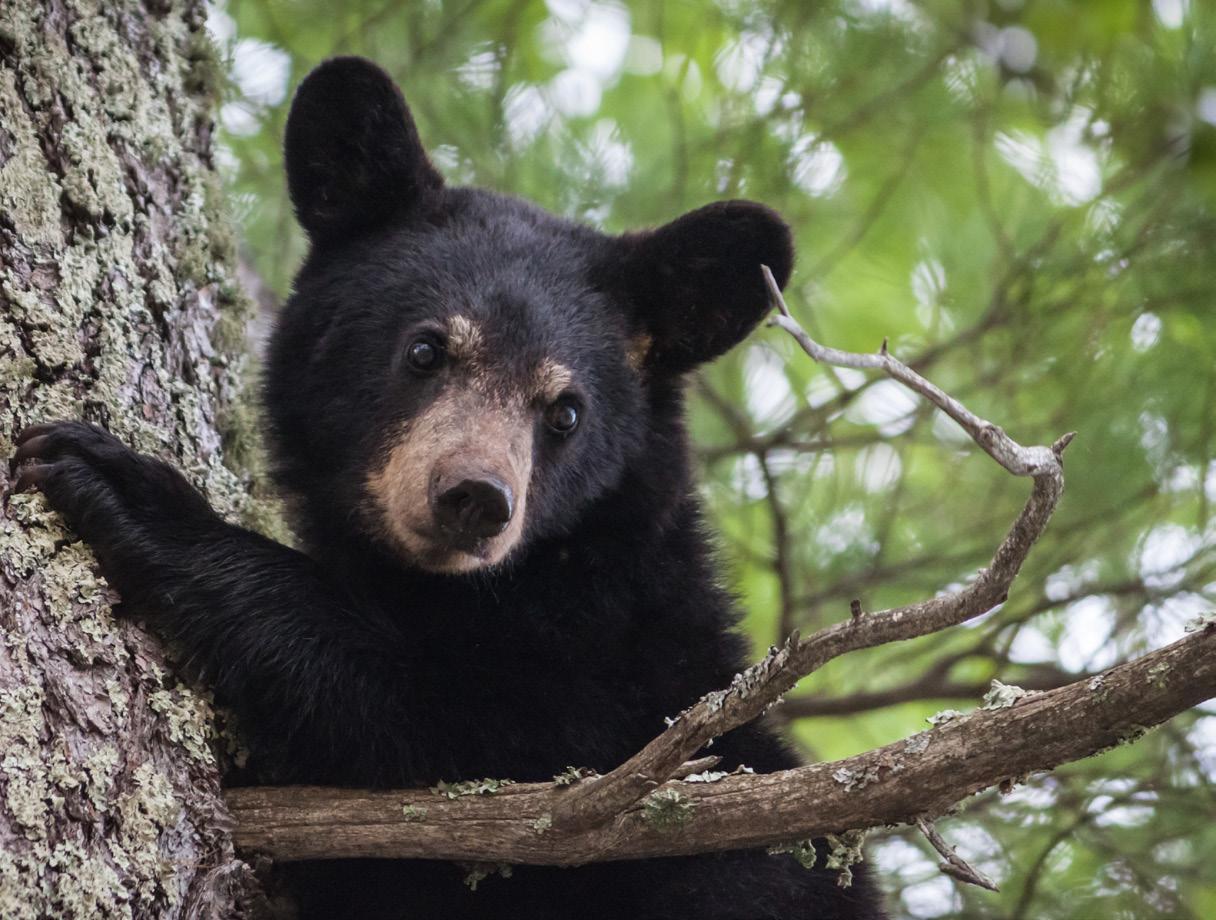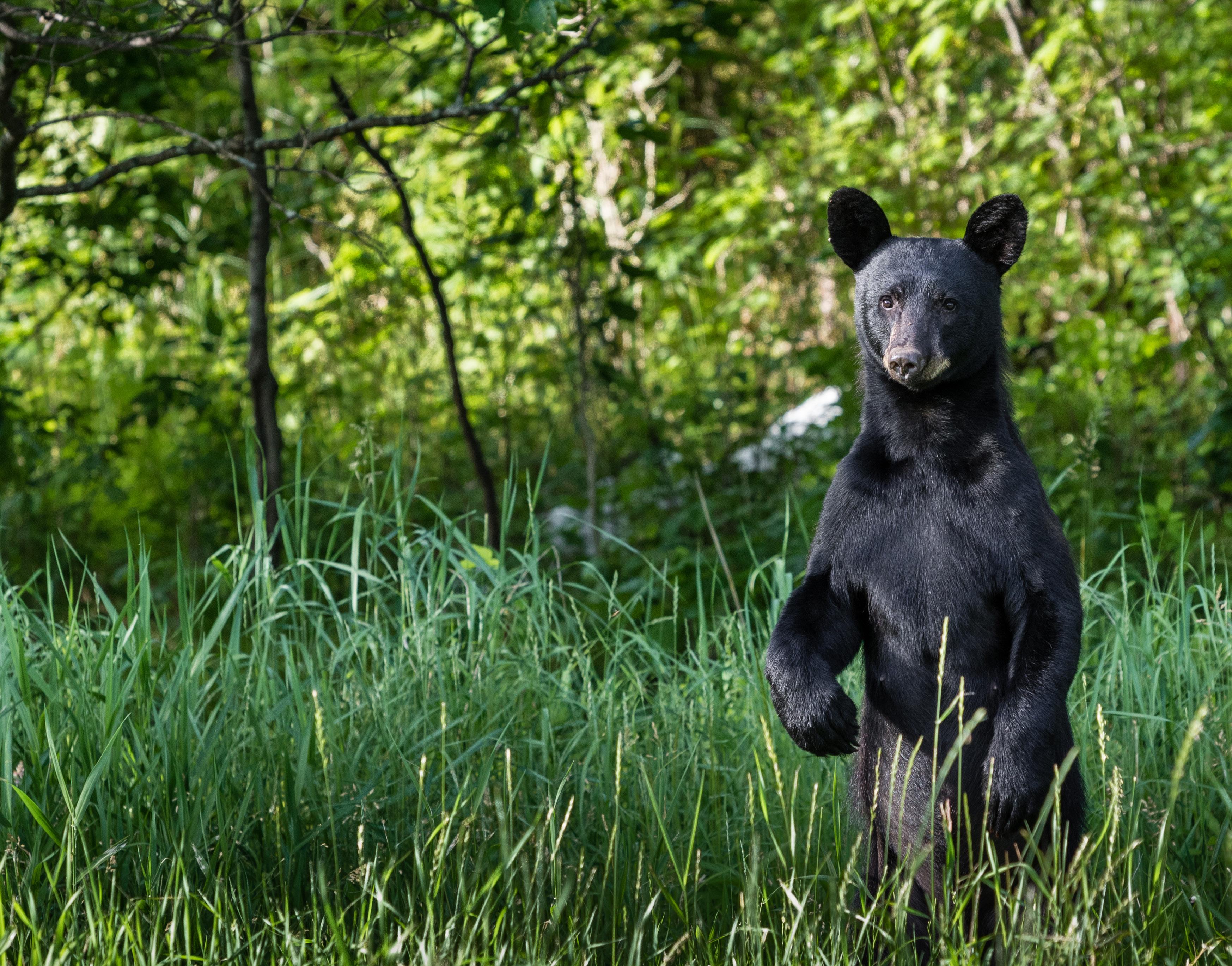
5 minute read
Be Bear Aware
Andrea Zani
Andrea Zani is managing editor of Wisconsin Natural Resources magazine.
It's not every day you'd expect to see a bear in your backyard, but it happens. You might spot them when enjoying the outdoors, too, though confrontations are uncommon in Wisconsin.
Knowing what attracts bears and how to minimize these things — and what to do if you encounter a bear — will go a long way to keeping you safe.
Wisconsin is home to an estimated population of more than 24,000 American black bears (Ursus americanus). Generally secretive animals, bears are far more prevalent in the forested northern half of the state, but sightings can occur in just about any Wisconsin county.
“Wisconsin’s black bear population is healthy and has been slowly expanding southward for years,” said
Randy Johnson, large carnivore specialist in the DNR’s Bureau of Wildlife Management. “Bears can commonly be found into portions of central and west central Wisconsin as well.”
Bear populations in the southern part of the state are expected to remain insubstantial, Johnson noted, “due to limited habitat and current management actions.” Still, seeing bears in these areas happens.
“Bears spotted in southern Wisconsin are often transient young males roaming and looking for new territory,” Johnson said. “This is a normal part of black bear ecology and behavior and is a sign of a healthy population.”
Increased use of trail cameras, home security cameras and cell phones, along with the ability to share images widely on social media, have led to more bear observation reports, Johnson said. “Oftentimes, a single bear moving through an area can be the source of many local sightings,” he added.
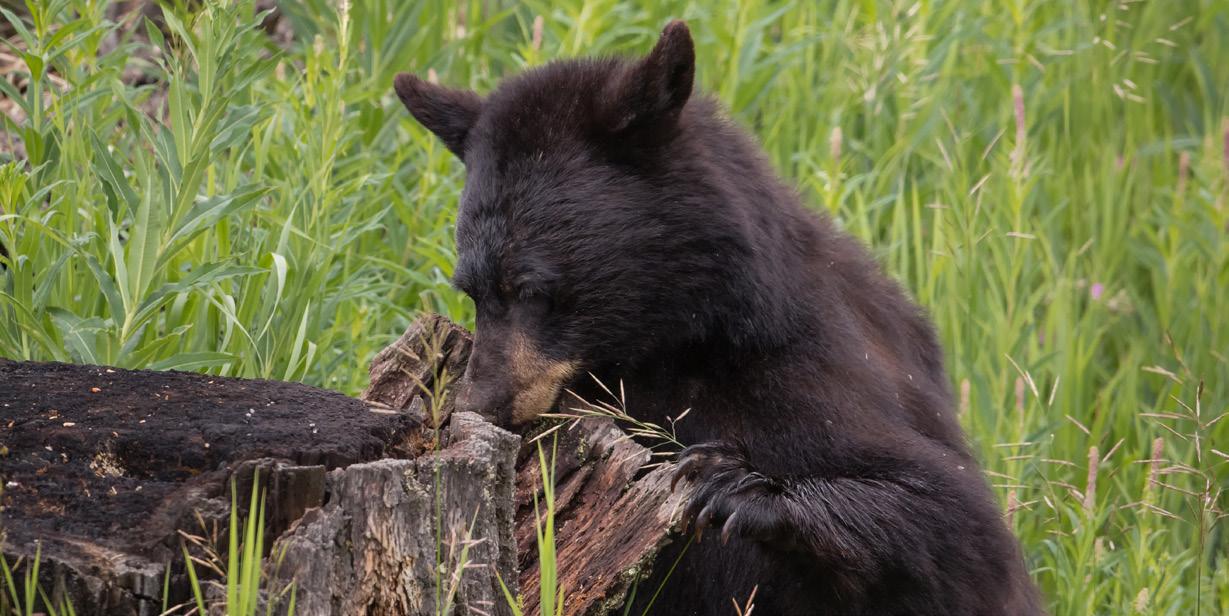
What Drives Them
Black bear sightings outside of more traditional habitats often increase in summer, with several reasons for this.
Bears in Wisconsin usually emerge from their dens in March or early April and they’re hungry! Finding food is the priority as they set out. Female bears, or sows, with cubs about 18 months old go their separate ways so the sow can breed again.
“This results in a good number of young bears out on their own for the first time,” Johnson said. “While young female bears tend to establish a territory of their own near the area they were born, young male bears tend to disperse widely and may travel 100-plus miles in their search for suitable territory.”
Male bears of breeding age also might travel widely in search of females and exhibit increased daylight activity. This makes bears more visible, too, especially during May and June.
By late summer, bears are in “full eating mode,” Johnson said, as they prepare for the upcoming winter. “And this can result in more visibility as well.”
Focus On Food
As summer turns to fall, it’s particularly important to be aware of what drives bear activity most during that time — food.
“Bears are working overtime looking to fatten up for the long winter ahead,” Johnson said. “I like to say bears have to eat a year’s worth of food in six months! This annual eating marathon is called hyperphagia.”
Bears can spend up to 20 hours a day actively searching for food and eating, hoping to consume 20,000 calories daily. Bears have a powerful sense of smell that draws them to any potential food source.
“This is a time when it’s especially important to make sure there is no bear food available around homes and camps,” Johnson noted. “Doing so keeps bears from coming into conflict with people and pets and ultimately keeps bears wild.”
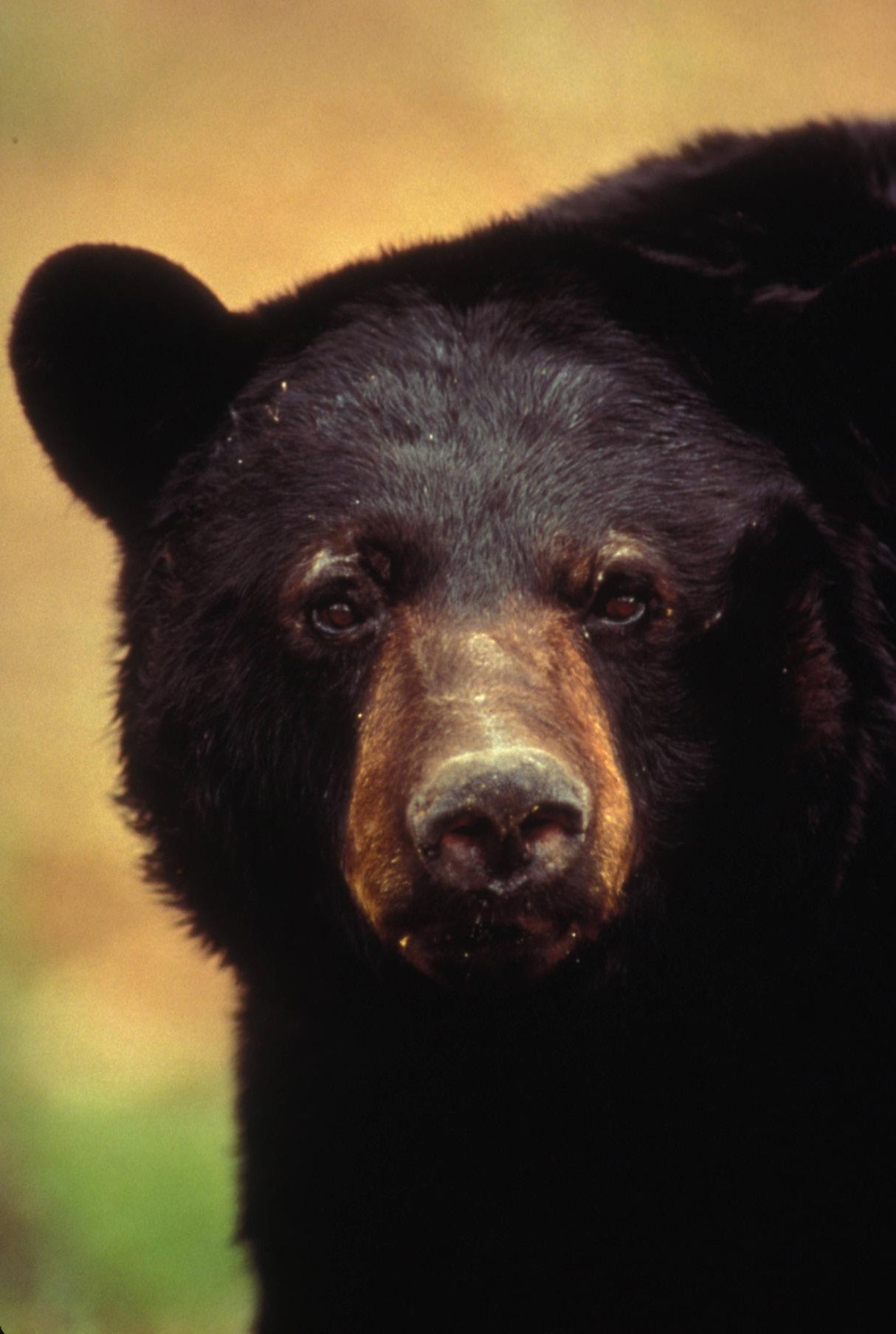
Bear Safety Tips
Incidents of black bears attacking humans are very rare, and there has never been a fatal wild bear attack recorded in Wisconsin. But encounters do occur, mostly as the result of bear habituation around humans due to feeding, whether intentional or not.
The DNR, in partnership with the U.S. Department of Agriculture’s Wildlife Services Program, responds to about 600 bear-related nuisance complaints in the state each year. If you’re concerned about run-ins at your home or while enjoying the outdoors, remember these tips.
• Please don’t feed the bears. Eliminating potential food sources is key to banishing backyard bears and keeping them away from campsites. Never intentionally feed bears.
• Reduce smells from trash and recycling. Thoroughly rinse food containers before discarding and store meat scraps or fats in the freezer or refrigerator until garbage day. If possible, store waste containers in a closed building and lock commercial dumpsters.
• Remove bird feeders when bears are active. Black bears raiding bird feeders tops the list for bear nuisance complaints in the state. Especially in summer months, remove feeders and any fallen seeds.
• Clean grills and picnic tables. Leftover scraps and residues can attract bears.
• Take care when camping. Stash your trash in bear-proof containers or lock it in a vehicle. Keep food, beverages and scented toiletries secured, too, and never bring anything with an odor into your tent.
• Be careful with pets. Though not aggressive by nature, bears might defend themselves or attack pets if provoked. Remove outdoor pet food, limit the time pets are alone outside and keep them on a leash when recreating. Never attempt to break up a fight between a bear and a pet.
• Never approach any bear. And stay far away from a sow with cubs. If a bear feels nervous, it might moan, huff, click its teeth or stomp the ground, indicating it wants space.
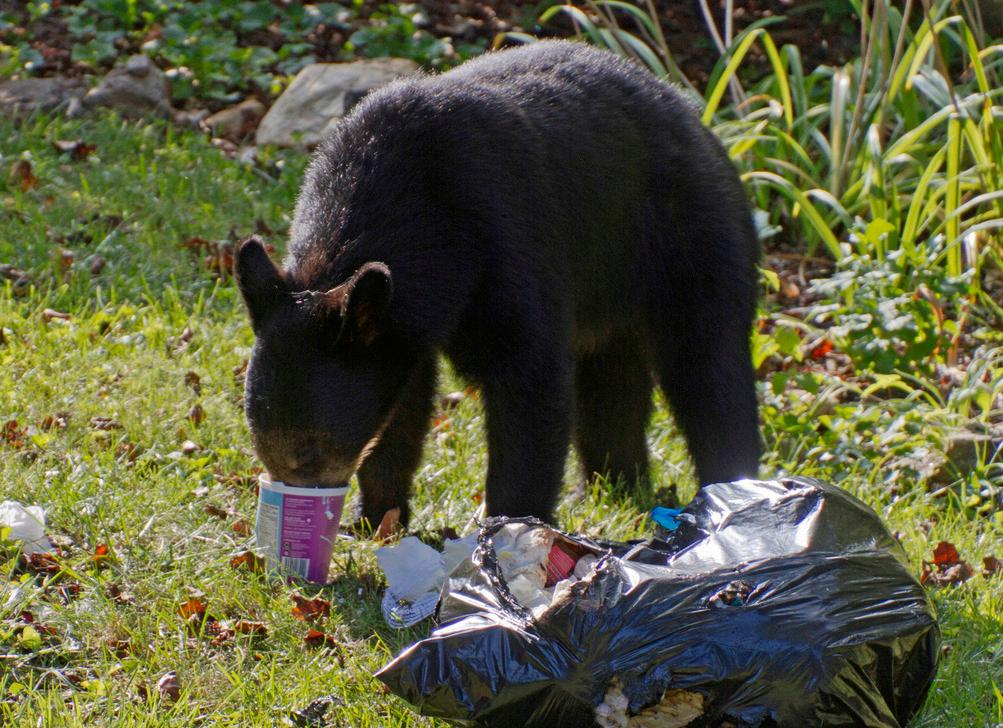
Report A Sighting
You can use the DNR’s wildlife observation form online to submit bear sightings in Wisconsin.
